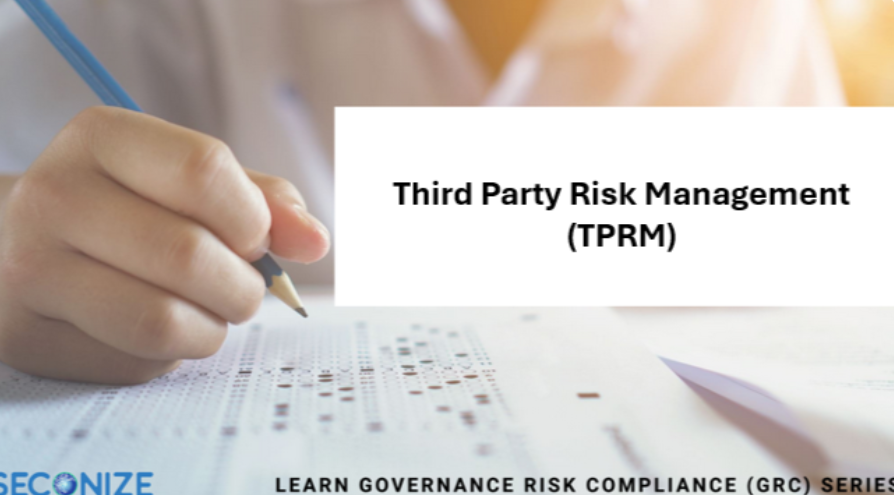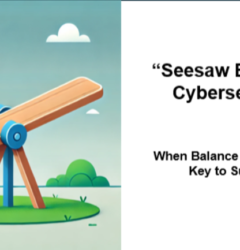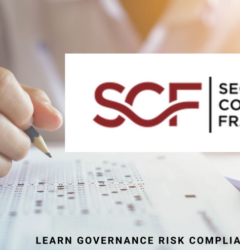

In today’s interconnected business landscape, organizations rely heavily on third-party vendors for operational efficiency, specialized expertise, and services. While these partnerships drive innovation and scalability, they also introduce risks that can threaten data security, compliance, and business continuity.
Third-Party Risk Management (TPRM) is essential for identifying, evaluating, and mitigating these risks throughout the vendor lifecycle—starting with the vendor onboarding process.
Why Third-Party Risk Management is Crucial for Vendor Onboarding
The onboarding process sets the foundation for a secure and successful relationship with vendors. A robust TPRM framework ensures that organizations evaluate the vendor’s security posture before allowing them access to sensitive systems, data, or infrastructure. Without proper vetting, vendors can become entry points for cyberattacks or compliance violations, leading to reputational damage and regulatory penalties. Thus, TPRM ensures that:
-
Vendors meet regulatory compliance requirements (e.g., ISO 27001, GDPR, RBI Master Directions).
-
Data and business continuity risks are mitigated by assessing vendors’ controls.
-
A transparent and secure vendor relationship is established from the start.
How Third-Party Risk Management is Performed
Organizations follow multiple strategies to assess and manage risks during the vendor onboarding and lifecycle processes. Below are some of the key components:
1. Vendor VA/PT Reports
-
Vulnerability Assessment and Penetration Testing (VA/PT) reports provide insights into the security vulnerabilities in the vendor’s environment.
-
Reviewing these reports ensures the vendor has identified and remediated critical vulnerabilities, lowering the risk of breaches via weak systems.
2. Security Ratings
-
Organizations use security rating platforms (like Bitsight , SecurityScorecard UpGuard FICO ) to monitor a vendor’s cybersecurity posture in real time.
-
These ratings offer a quantitative view of the vendor’s potential risks, enabling continuous risk monitoring even after onboarding.
3. Security Questionnaires
-
Security questionnaires assess the vendor’s practices against industry standards such as ISO, NIST, or SOC2.
-
They cover areas such as data encryption, access controls, incident management, and disaster recovery plans to ensure vendors align with the organization’s security expectations.
Inbound vs. Outbound TPRM Requests
TPRM requests can flow in two directions, and it’s crucial to understand the difference to manage them effectively.
Inbound TPRM Requests
-
These originate from external clients or partners evaluating the organization.
-
Example: If a company provides a SaaS solution, prospective customers may require TPRM documentation to assess its security controls.
Outbound TPRM Requests
-
These are initiated by the organization to assess vendors or third parties during onboarding or renewal.
-
Example: An organization onboarding a cloud provider will require security reports, questionnaires, or certifications from the vendor.
Best Practices for Streamlining Third-Party Risk Management Processes
TPRM can be complex and time-consuming if not managed efficiently. Here are best practices for streamlining these processes:
-
Use Standardized Frameworks and Questionnaires
Leverage industry-standard security questionnaires (e.g., CAIQ, NIST CSF) to avoid custom questionnaires for every vendor.
-
Centralize Third-Party Risk Management Documentation
Store all TPRM data and evidence in a centralized platform to ensure easy access and tracking.
-
Automate Evidence Validation
Use automation tools to validate evidence such as certifications (ISO 27001, SOC2) and audit reports. Automation ensures consistency and reduces manual errors.
-
Implement Continuous Monitoring
Instead of limiting assessments to the onboarding stage, continuously monitor vendors using security rating platforms.
-
Segregate Vendors by Risk Level
Classify vendors into low, medium, and high-risk categories to allocate resources effectively and ensure focus on critical vendors.
Best Practices for Vendor Exit Management
Managing risks doesn’t end with the onboarding process. A vendor exit strategy is equally crucial to ensure the organization’s data, systems, and business operations are secure after the relationship with a vendor ends. Here are some best practices for vendor offboarding:
-
Terminate Access Privileges Immediately
Ensure that all user accounts, system credentials, and physical access provided to the vendor are disabled or revoked.
-
Retrieve Sensitive Data and Assets
Require vendors to return or securely delete all sensitive data, intellectual property, and assets shared during the engagement.
Verify data destruction by requesting a Certificate of Data Destruction where applicable.
-
Conduct an Exit Security Review
Perform a final security audit to ensure the vendor has complied with all offboarding requirements, such as data removal and the termination of access.
-
Update Contracts and SLAs
Ensure that all outstanding legal obligations, service-level agreements (SLAs), and warranties are reviewed and updated or closed.
-
Communicate Internally and Externally
Notify relevant stakeholders (e.g., IT, legal, procurement) about the termination and ensure alignment on next steps.
Inform any clients or third parties affected by the change to maintain transparency.
-
Monitor for Residual Risks
Even after termination, monitor for any residual risks that might arise from the vendor’s previous access or involvement.
-
Update Vendor Risk Register
Document the exit process, lessons learned, and any security issues encountered. Update the vendor risk register accordingly to inform future partnerships.
The Need for a Holistic Third-Party Risk Management Audit
A fragmented or reactive TPRM strategy can leave gaps in security and compliance. Organizations should adopt a holistic Third-Party Risk Management audit to evaluate:
-
The adequacy of the TPRM framework across the entire vendor lifecycle.
-
Compliance with regulatory requirements (e.g., PCI-DSS, RBI Master Directions).
-
The alignment of risk management processes with business goals and objectives.
This approach ensures that all third-party risks are identified, documented, and mitigated proactively.
The Role of Automation and AI in TPRM
Manual processes in TPRM can be cumbersome, prone to errors, and inefficient. Automation and AI enhance the efficiency and accuracy of TPRM operations in the following ways:
-
Automated Vendor Risk Assessments
Tools can automatically generate risk scores based on vendor-submitted reports and ratings, reducing human effort.
-
AI-Powered Risk Predictions
Machine learning models can predict potential vendor risks based on historical data, enabling proactive mitigation.
-
Smart Document Processing
AI can quickly process security questionnaires and certifications, flagging discrepancies or missing data for review.
-
Continuous Monitoring
Automated tools monitor vendors in real-time, triggering alerts if their security posture degrades.
-
Workflow Automation
Automate approval workflows, ensuring smooth onboarding, renewals, and vendor exits.
Conclusion
Third-Party Risk Management (TPRM) is critical in safeguarding organizations from the risks associated with vendor relationships. It ensures that vendors meet security and compliance standards before onboarding and throughout the partnership lifecycle. By leveraging VA/PT reports, security ratings, and questionnaires, organizations can thoroughly assess vendors. Differentiating between inbound and outbound Third-Party Risk Management requests helps streamline processes, while best practices such as automation and continuous monitoring ensure smooth and efficient TPRM operations.
To stay ahead in the evolving cybersecurity landscape, organizations must adopt a holistic Third-Party Risk Management audit approach. This, combined with automation and AI, transforms TPRM from a reactive process into a strategic advantage, ensuring that vendor relationships remain secure, compliant, and beneficial.
















Recent Comments